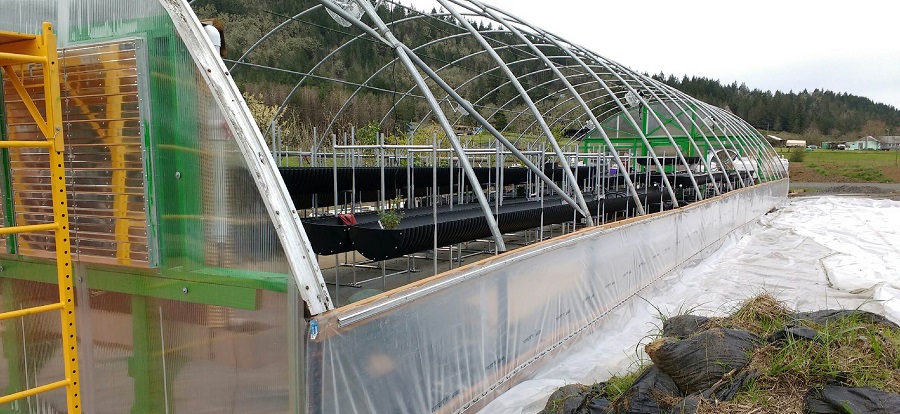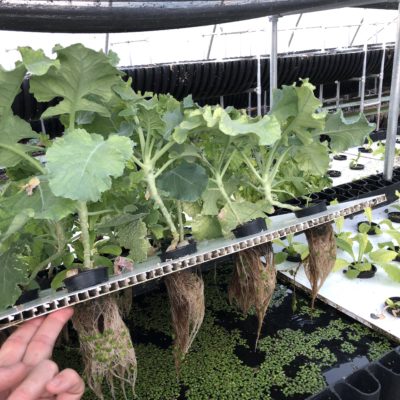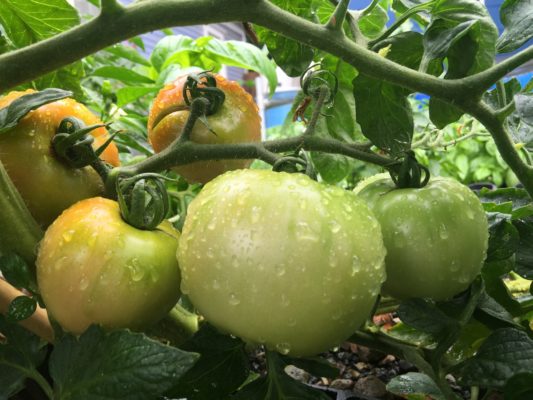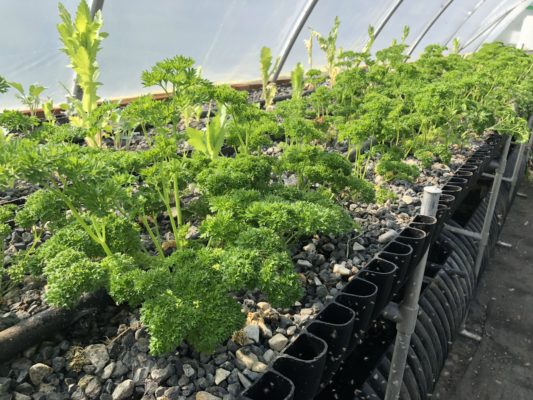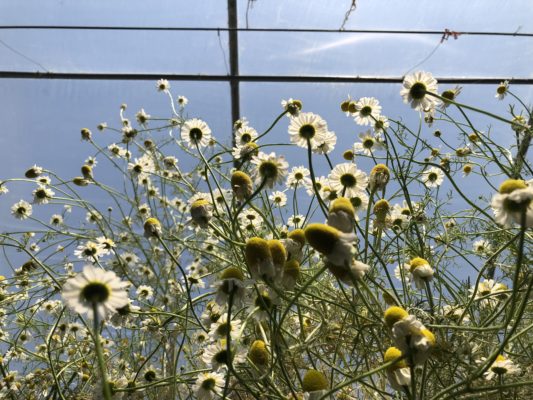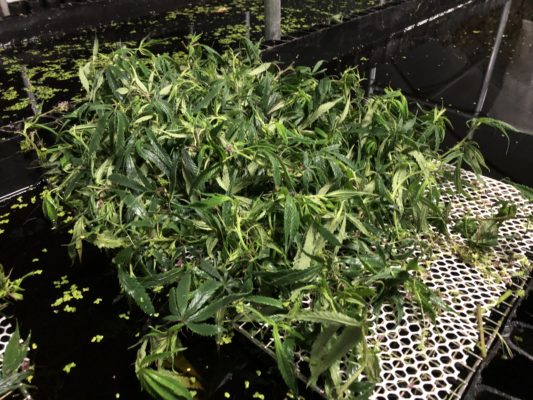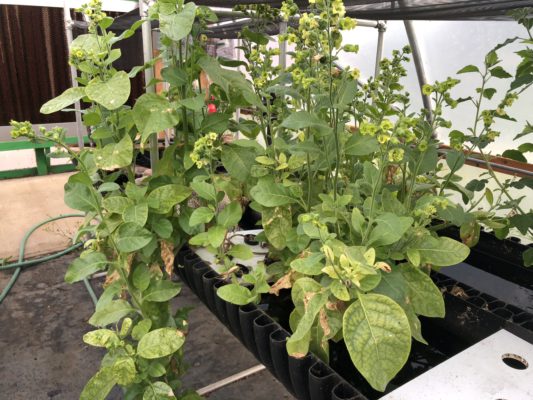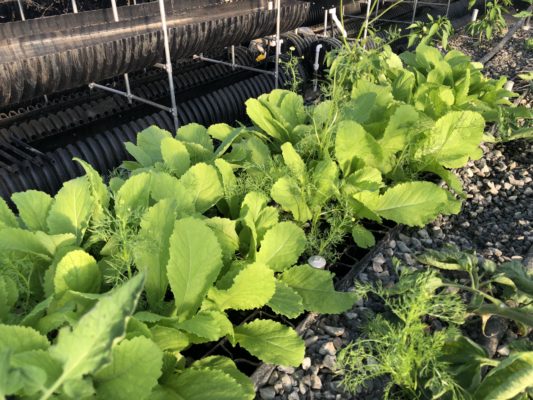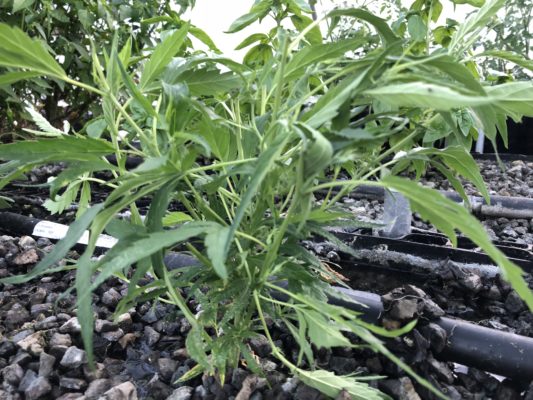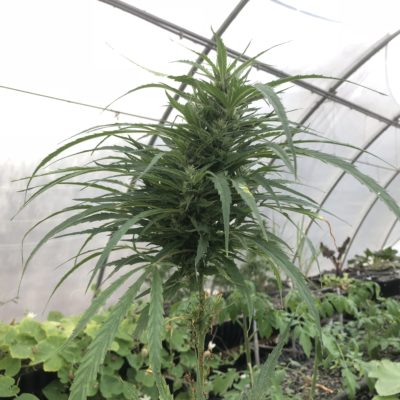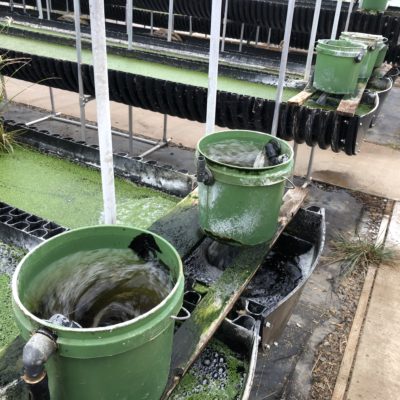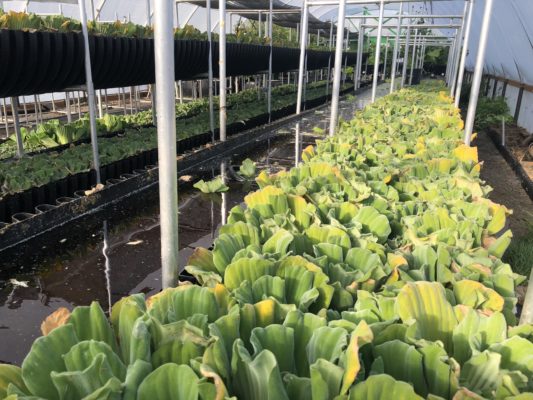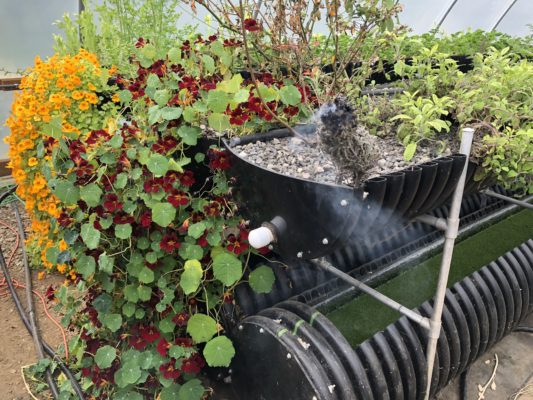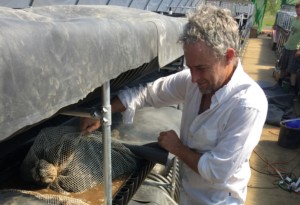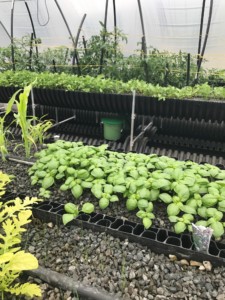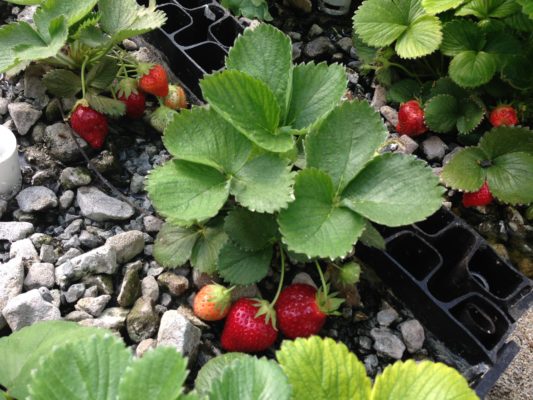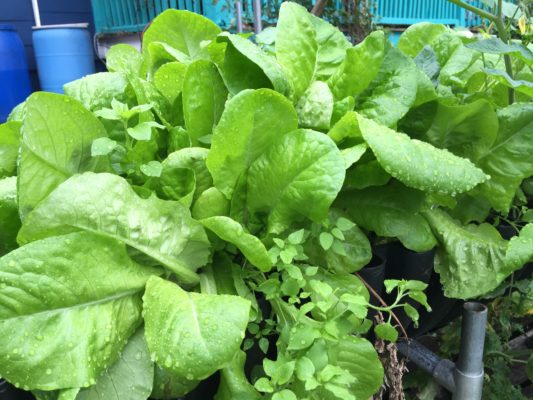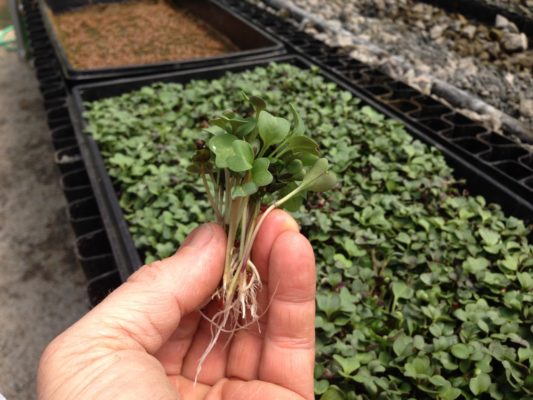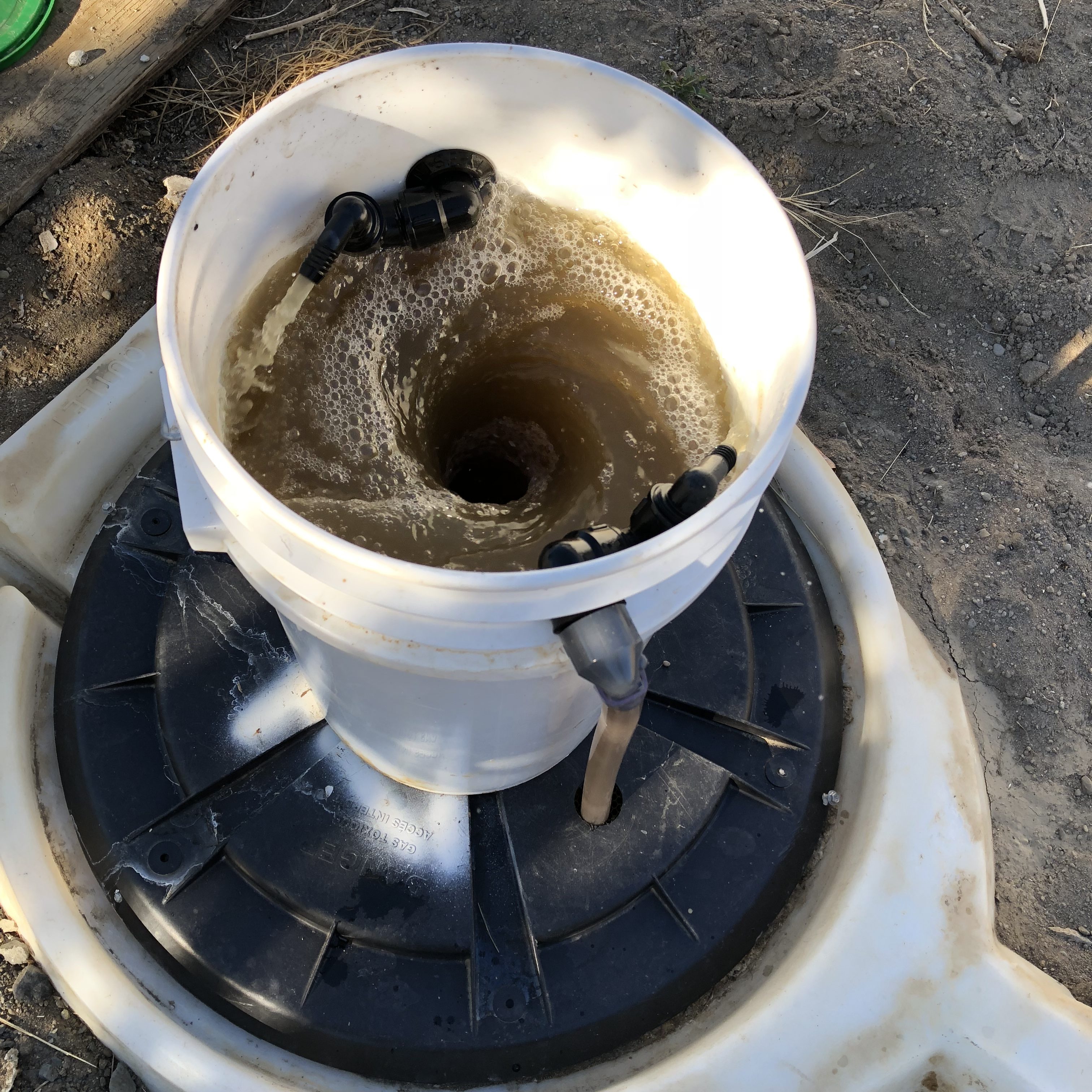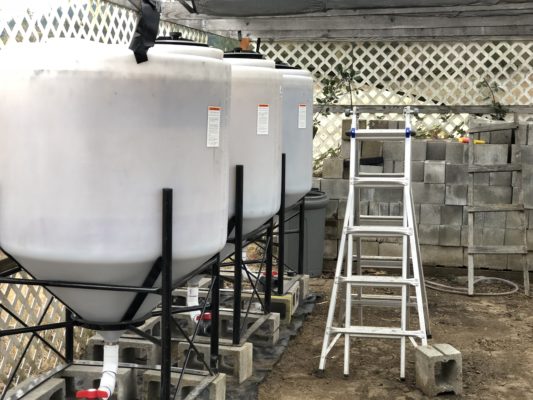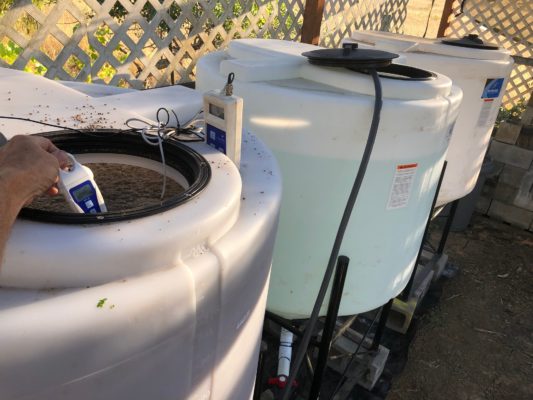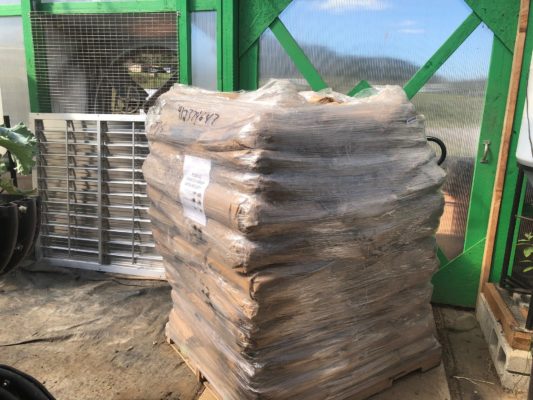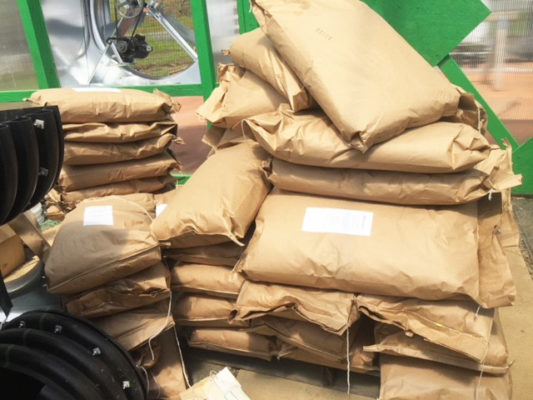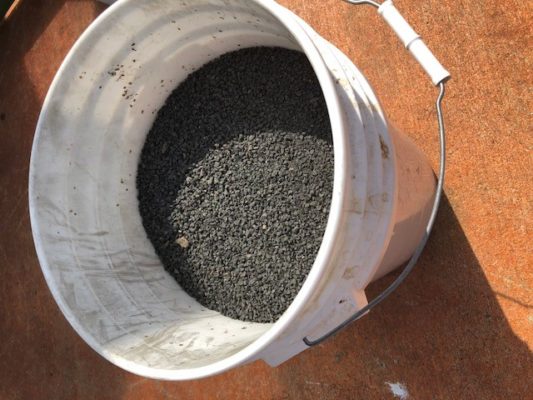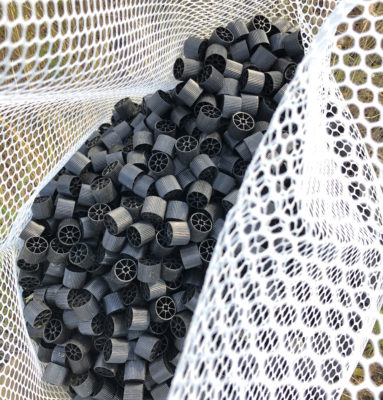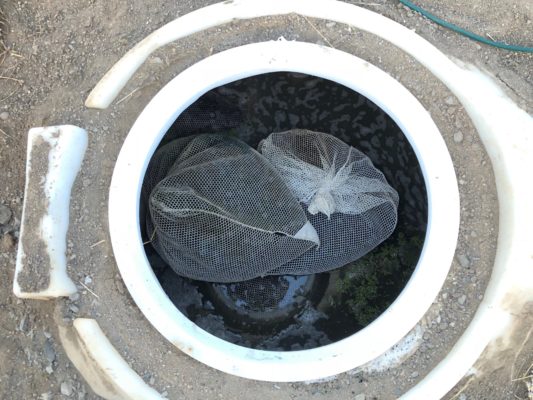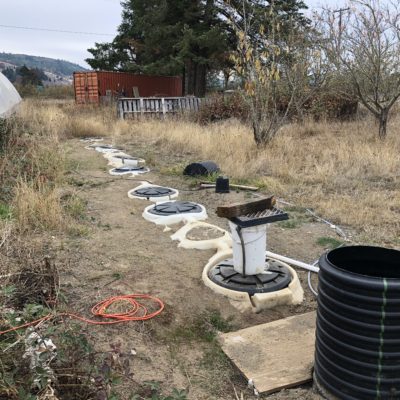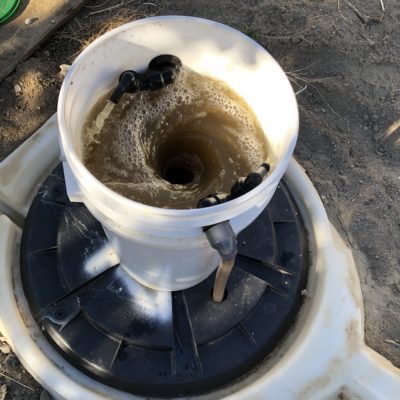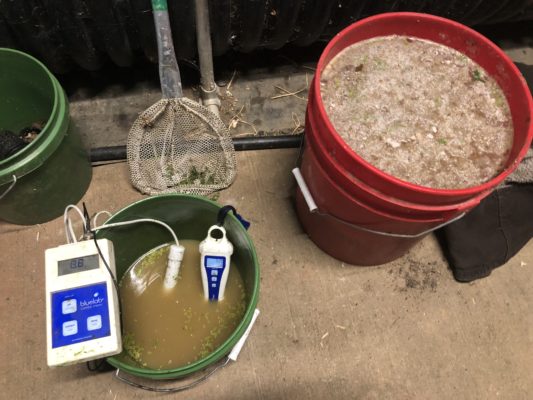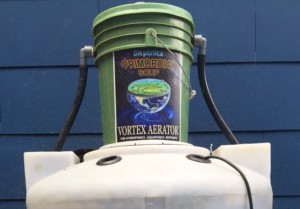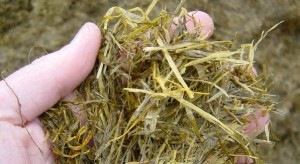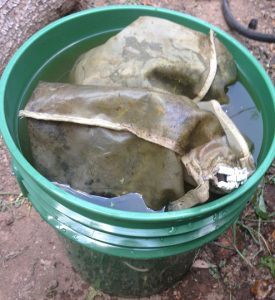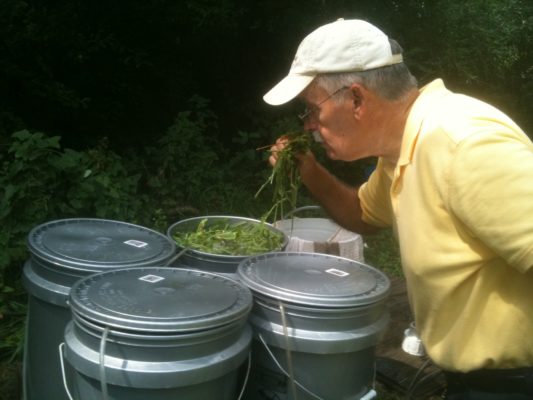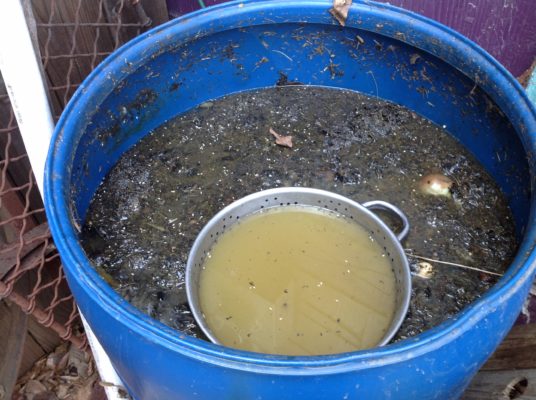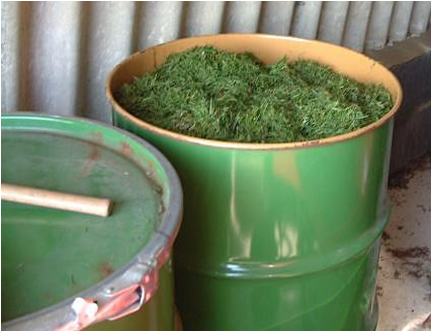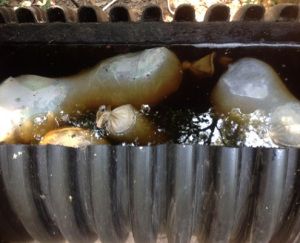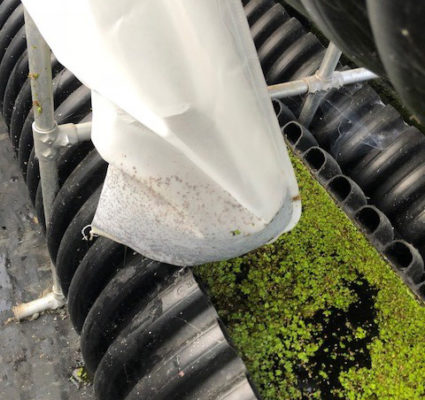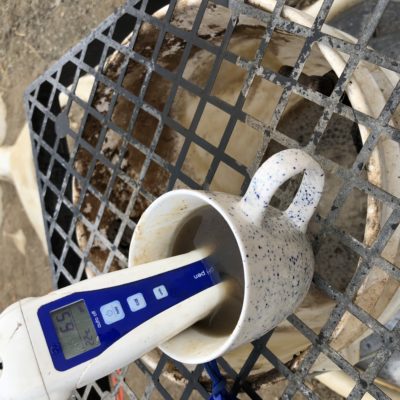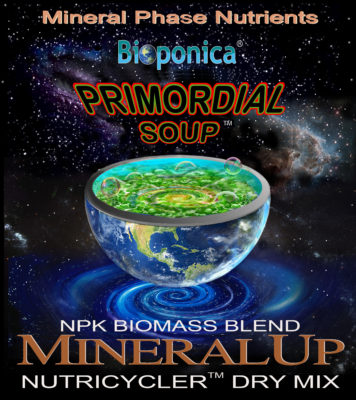-
- Recirulating water flow is controlled by central and local automatic pumps that may be adjusted to flood and drain or ebb and flow as frequently as desired.
- Tables and tanks are designed to only require infrequent nutrient and water top-off or operational supervision.
- Aggregate beds comprise 18x 30SF troughs in 20’ sets of two with two tanks below or 9x 60SF/grow modules. Tanks below each pair of 30’ beds are 220 gallons each. There are 3520 total gallons of tanks below the total area of 540 SF grow beds. These tanks may be used to store nutrient water mix or to raise fish in classic aquaponics soilless growing method.
- Aggregate beds are suitable for growing all varieties of plants including hemp, cannabis, lettuce, tomatoes, peppers, basil, herbs, flowers, vines, water plants or even cacti. Best use for aggregate beds are larger, long term, heavy feeding, deep rooted annual and perennial plants.
- In deep water troughs, mechanical aeration is not required as deep water raft culture beds are aerated through Air Layer Technique™ of ebb and flow below with air layer created below suspended plant rafts.
- At one end of each deep water trough and each fish/nutrient tank there are Bucket Vortex units that pull water from one end and move to other with purpose of creating river-like energetic forces to purify and mix water and nutrients. Structured water adds characteristic to water that supports plant and fish nutrient absorption.
- There are 4 underground storage tanks, 1100 gallons each, outside greenhouse and underground. These are integrated with each grow table and controlled by pumps and automatic timers, plus valves at each table. Tanks contain either concentrated nutrients, well water or a mixture of both. The nutrient and well water tanks are plumbed to each 20’ (aggregate beds with tanks) Biogarden module. They are also plumbed to the additional two tanks to provide a plant ready solution serving the 40’ deep water culture Biogarden modules for gravity return ebb and flow cycles.
Bioponica's concept is the 'Biofarm,' an integrated organic soilless facility. Commercially growing plants and making liquid fertilizer.
The Oakland Oregon Biofarm was developed for produce and hemp production as well as the manufacture and sale of organic liquid fertilizer on site. Bioponica is the expert in organic soilless grow systems and nutrients to support all varieties of plant product. From microrgreens and wheatgrass to tomatoes, herbs and hemp the Biogarden grow modules and anaerobic fertilizer production Nutricycler systems are integrated to provide the most sustainable approach to organic farming ever developed. For help with determining best strategy, let us guide you in determing business feasibility with respect to plant and liquid fertilizer yield, cost per square foot installation, overhead, return on investment. Depending on location and project feasibility, we'll order all components, help coordinate site installation and train your staff in operation and plant growth.
Bioponica provides consultation services to design and install greenhouse and outdoor grow systems, large and small.
The fertilizer making process is fairly simple as we utilize microbes to do the bulk of the work. Starting with blends of nutrients, produced at Bioponica, we add biomass at a ratio of 1lb/3gallons of water. This is anaerobically digested, with the aid of specific microbes and enzymes and a mix of elements that give us a good carbon/nitrogen ratio for proper thermogenesis and acid decomposition. The extracted leachate is then aerated with biofiltration bags and vortex aeration and mixing. This process removes carbon and leaves a solution that is clear, brown and plant ready.
Making Organic Liquid Fertilizer
Bioponica has been working on developing a means of making organic liquid fertilizer inexpensively in order to overcome the high cost of organic farming.
Bioponica has been working for the past 5 years on developing biomass mixtures that include plants and organic materials that have varying ratios of nitrogen, phosphorus and potassium, NPK. We found that dehydrated green plants such as alfalfa, kudzu, and brewers grains are high in nitrogen plus minerals, but also high in carbon. Other materials such as bloodmeal, cottonseed meal and coffee grounds have lower carbon but also can be more difficult to 'crack' or release nitrogen from the biomass solids. We've managed these issues by adding various enzymes, optimizing carbon ratio and adding microbes into dry mixes we refer to as Primordial Soup blends.
The mixtures for phosphorus and minerals include bone meal, wood ash, kelp, along with a sufficient ratio of carbon rich biomasses that feed the anaerobic and aerobic microbes. This is necessary to create a fermentation process that breaks down the complex amino acid and mineral rich compounds in order to drive them into solution and make them useful to the plants following carbon removal and biofiltration.
The resultant liquid fertilizer is a superior form of nourishment to growing plants and feeding the microbes of the soil because they are easier utilized - more microbe-ready and plant-ready. It is common knowledge that a large percentage of biomass used to fertilize the soil takes months to years to break down into a form that can be utilized by microbes and plants. The problem with this is that much of the organic and inorganic fertilizers used end up in the rivers, lakes and oceans causing algae bloom and pollution that kills aquatic life. By utilizing a liquid fertilizer which is readily utilized by plants we not only minimize runoff of fertilizers but we also create a means of application that is less costly than other methods of soil application such as tilling and field dressing. And, with adequate soluble carbon, organic liquid ferililizers provide humates, amino acids and other compounds that provide favorable ionic characteristics to the soil.
Bioponica has pursued researching and developing processes and blends for making organic dry blends to be used for making liquid fertilizer because it is a more sustainable method of soil fertility. There is an abundance of nutrients in almost every type of disposed-of agriculture and livestock related waste biproduct. And that's not even considering manures. Why allow waste to be discharged to the environment when simple processing techniques can be employed to recycle and reuse?
When ammonia-nitrogen is made from petroleum and mineral salts are derived from earthen mines instead of biomass discards we end up with salty soil that locks up nitrogen and we pollute the earth. When phosphorus mines become depleted, agriculture will have no place to turn but to biproducts of agriculture such as bone meal which is our most abundant and most-wasted source of phosphorus and calcium. We believe that utilizing biomasses to make liquid fertilizers is not only smart but necessary for the future of agriculture.

